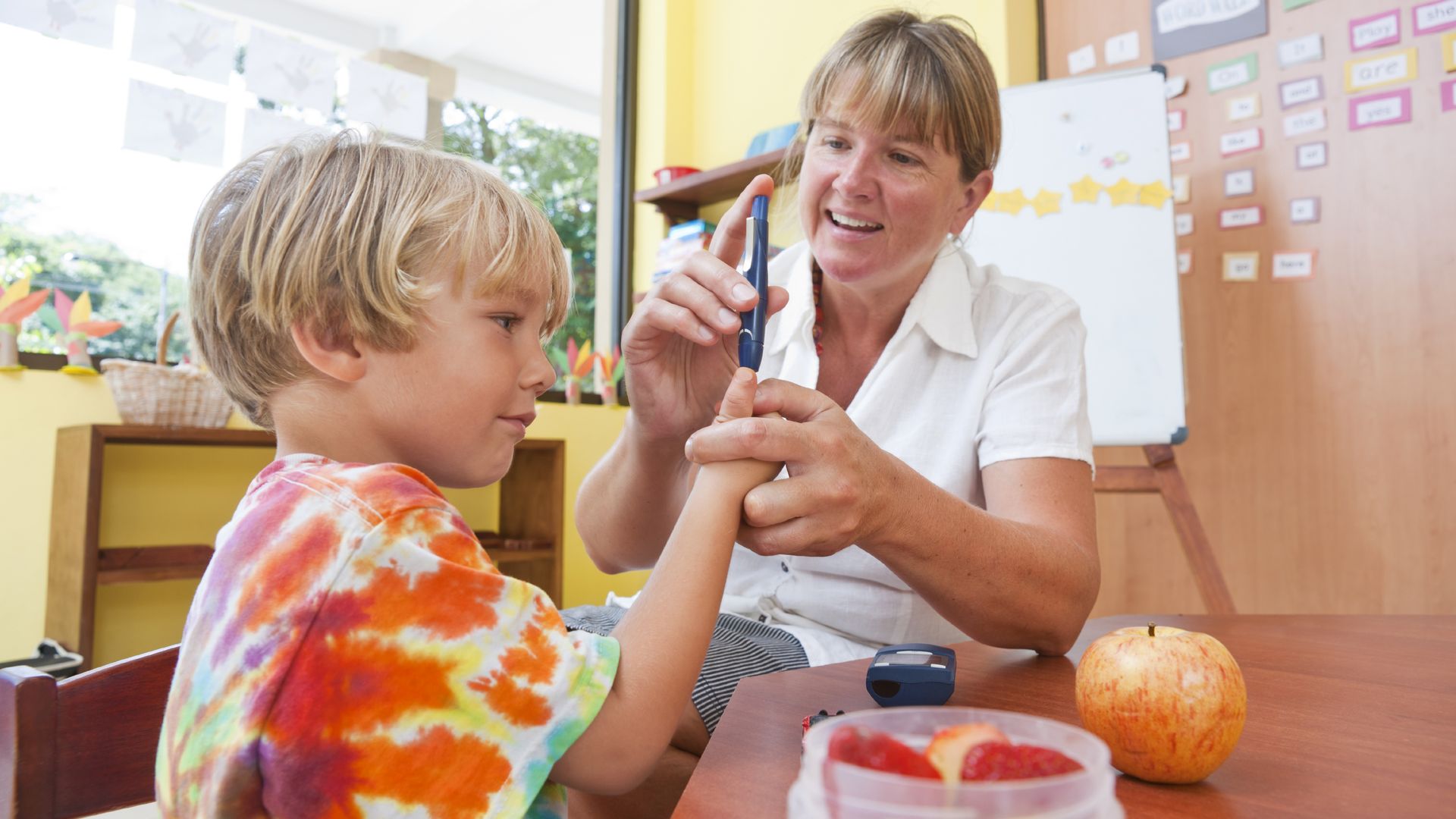Children who contract COVID-19 are significantly more likely to develop type 1 or type 2 diabetes more than 30 days following their illness than their peers who weren’t infected, according to a major new study by the Centers for Disease Control and Prevention (CDC).
The research reviewed data collected from over 2.5 million pediatric patients between the ages of 0 and 17 from March 2020 to June 2021.
Researchers found that those who were infected with SARS-CoV-2, the virus that causes COVID-19, were 2.66 times more likely to be diagnosed with diabetes than kids who never contracted the novel coronavirus.
They were also 2.16 times more likely to develop the disease than children who caught other acute respiratory illnesses.
These results, released by the CDC on January 7, come as COVID-19 cases and hospitalizations are skyrocketing in young people among the rapid rise of the Omicron variant.
Last week, over 580,000 new pediatric cases of COVID-19 were reported, by far the highest number ever, according to the American Academy of Pediatrics; more than 830 children were hospitalized with SARS-CoV-2, also the highest-ever figure, per the CDC.
So, what does this all mean?
Considering this study’s findings, the current surge could bring major consequences for kids. “Having COVID—not just being alive during the pandemic, but actually getting the disease—was associated with increased risk of getting diabetes,” explains G. Todd Alonso, M.D., associate professor of pediatrics at the University of Colorado School of Medicine. But it’s not clear exactly how COVID-19 and diabetes are related.
First, it’s important to understand the difference between type 1 and type 2 diabetes. Both types involve the body’s impairment in producing or using the hormone insulin, which results in increased blood sugar, per the American Diabetes Association (ADA).
Type 1 is essentially an inability to produce any insulin, while type 2 decreases your body’s ability to use the insulin it does produce. Type 1 is often diagnosed during adolescence and considered an autoimmune disease; type 2 more frequently develops in middle age and has a strong genetic component, the ADA says.
Diabetes can also be exacerbated by other conditions. “All sorts of illnesses, including bacterial infections, cause stress on the body, which leads to increases in insulin needs,” Dr. Alonso explains. “For someone who is already prediabetic, this could push them over the edge.”
Both types of diabetes are more likely to be diagnosed in kids with COVID-19 than those who never had it, the CDC study says. “There is some suggestion that the SARS-CoV2 virus may have some negative interaction with the cells that make insulin,” Dr. Alonso says, leading to insulin resistance.
It’s also plausible that COVID-19 could trigger autoimmune disease in people, he explains, potentially causing type 1 diabetes.
Both types of diabetes can lead to diabetic ketoacidosis, a serious complication that occurs when the liver breaks down fat for fuel instead of sugar, leading to an overload of ketones in the blood.
It’s most common in people with type 1 diabetes, the CDC says, although it is possible in those with type 2. Left untreated, it can become life-threatening.
“For type 2, we are very concerned about the increased rates of obesity we’re seeing in United States children during the pandemic,” Dr. Alonso continues. “But we’d expect these factors to be fairly constant across the whole population, and not just affecting people who got COVID-19.”
Unfortunately, it’s not possible to draw any definitive conclusions without more research into why kids who caught the novel coronavirus are developing diabetes at higher rates.
“Is this therefore the effect of earlier unmasking of disease, or are we going to continue seeing larger and larger numbers of children getting diabetes?” Dr. Alsonso asks.
“Ongoing study will be important.” He’s looking forward to upcoming data from Europe, especially, which might provide a clearer picture of what could be causing the correlation.
Are there any preventative measures parents can take?
“Health care providers should screen for diabetes symptoms in persons aged <18 years with a history of SARS-CoV-2 infection,” the study’s authors warn. “These symptoms can include frequent urination, increased thirst, increased hunger, weight loss, tiredness or fatigue, stomach pain, and nausea or vomiting.”
Although these symptoms are more associated with type 1 diabetes, per the ADA, the study does not distinguish between the two types.
As COVID-19 cases and hospitalizations rise, especially among young people, the CDC is also stressing the importance of safety measures like vaccines and boosters for all eligible Americans.
(Children as young as 5 are now eligible to get vaccinated, and everyone 12 and up can receive a booster shot five months after their second mRNA shot.)
“I have talked with many families who have kids with diabetes who worry about the possibility that vaccination could lead to an autoimmune reaction that worsens their child’s diabetes,” Dr. Alonso says.
“If anything, vaccines probably decrease the risk of autoimmunity compared to actually getting infected with the real virus.”
“Everyone eligible for COVID-19 vaccination should get vaccinated, and those eligible for boosters should get boosted,” he recommends, echoing the CDC’s advice.
“And when I say everyone, I’m not just talking about the risk reduction by protecting yourself, but also the benefit to society.”






